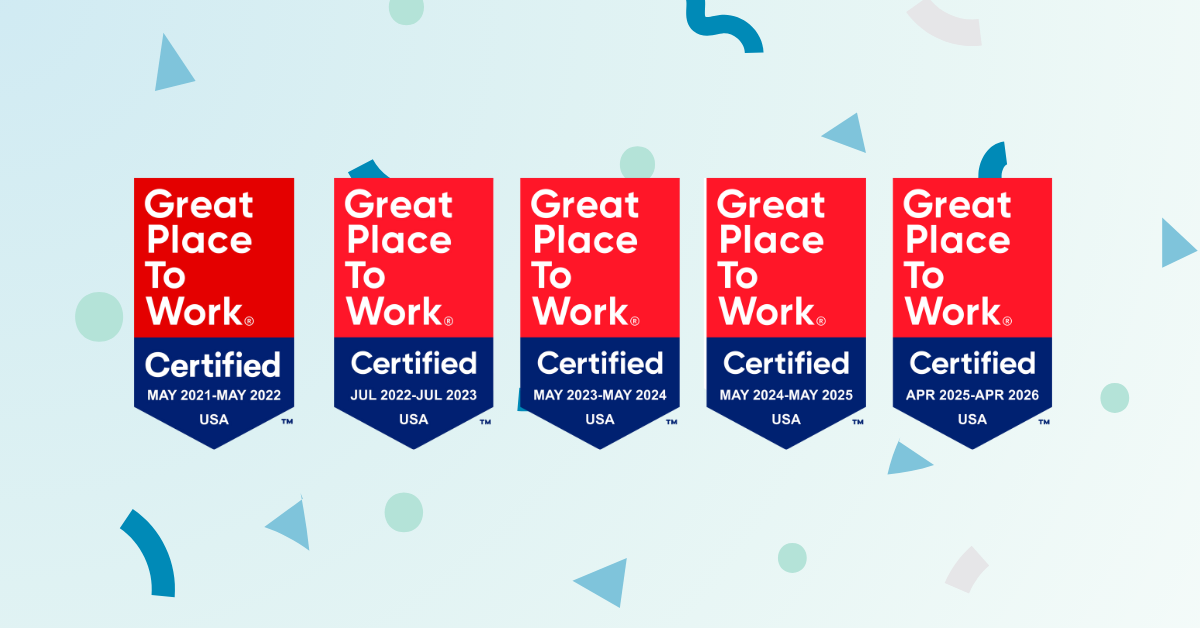ADA compliance refers to the Americans with Disabilities Act (ADA), 42 U.S. Code Chapter 126, which was signed into law on July 26, 1990 and amended by Congress in 2008.
The ADA is comprised of five titles: Title I, Employment, (regulations issued by EEOC); Title II, State and Local Government, and Title III, Public Accommodations (regulations issued by the DOJ); and Title IV, Telecommunications (regulations issued by the FCC). An update for Titles II & III was issued in 2010.
The ADA is designed to protect people with disabilities from discrimination. Historically, individuals with a disability have been denied equal access in critical areas such as employment, housing, public accommodations, education, transportation, communication, recreation, institutionalization, health services, voting, and access to public services.
The intent of the law is to level the playing field for individuals with a disability in everyday life and compel firms to fulfill their ethical responsibilities to serve everyone equally. In this article, we’re going to assess how law firms specifically can ensure that they are ADA-compliant.
How does ADA compliance pertain to law firms?
Most law firms will be subject to the provisions of Titles I, II, and III.
The ADA covers individuals who meet the definition of disability, as outlined in 42 U.S. Code Chapter 126 § 12102.
Disability is defined as:
- A physical or mental impairment that substantially limits one or more major life activities of such individual;
- A record of such an impairment, or;
- Being regarded as having such an impairment. See the full text of the ADA for additional definitions.
Title I
Title I of the ADA protects qualified individuals with disabilities from employment discrimination and applies to employers with 15 or more employees, including state and local governments, employment agencies, and labor unions.
Title I applies to all employment practices: recruitment, pay, hiring, firing, promotion, job assignments, training, leave, lay-offs, benefits, and all other employment-related activities.
Employers must make reasonable accommodations for individuals with a disability unless it would cause undue hardship. The employee or applicant must be qualified to perform the essential job functions, with or without accommodations.
Compliance involves more than disabled parking spaces, wheelchair ramps, and accessible restrooms. Braille or large print, ASL interpreters, captioned media, and lower desks or other surfaces for individuals using a wheelchair are other common accommodations for employees.
The EEOC provides guidance, as well as handles complaints by individuals who feel their employer has discriminated against them based on disability.
Title II
Title II of the ADA applies to state and local government agencies; federal agencies are governed by the Rehabilitation Act of 1973, Sections 501 and 505.
Title II requires state and local governments to provide individuals with a disability an equal opportunity to benefit from all their programs, services, and activities. This includes public education, transportation, recreation, health care, social services, courts, voting, emergency services, and town meetings.
The type of accommodation provided depends on the individual’s disability and the activity, program, or service.
Title III
Title III of the ADA applies to businesses and nonprofits serving the public.
Examples of this would typically include:
- Restaurants
- Hotels
- Retail stores
- Movie theaters
- Private schools (including housing)
- Doctor’s offices and hospitals
- Day care centers
- Gyms
- Law offices
- Organizations offering courses or examinations
- Privately operated transit (e.g., taxis, charter buses, hotel shuttles, airport shuttles, and ambulances/emergency transportation vehicles)
Commercial facilities need only comply with the requirements of the ADA Standards for Accessible Design. This would include office buildings, warehouses, and factories.
Religious organizations are exempt from the requirements of Title III, though they may still have to comply with state/local building codes or other laws prohibiting discrimination on the basis of disability.
Titles IV and V
Title IV of the ADA applies to telecommunications companies. They must provide services to allow callers with hearing and speech disabilities to communicate. Common accommodations are 711 relay operators, and Video Relay Services.
Title V outlines other requirements for how to implement the ADA.
Examples of requirements include prohibiting retaliation against a person who has asserted their rights under the ADA, stating that a person with a disability is not required to accept an aid or accommodation if they do not want to, authorizing courts to award attorneys’ fees to the winning party in a lawsuit under the ADA, and directing certain federal agencies to issue guidance explaining the law.
March 2022 Guidance on Web Accessibility and the ADA
ADA compliance for web accessibility refers to the designing and developing of digital content, websites, and online applications in a way that ensures equal access and usability for individuals with disabilities. This aspect of ADA compliance has gained increasing importance as technology plays an integral role in our daily lives, from accessing information and services to participating in online activities.
The Americans with Disabilities Act (ADA) recognizes that digital spaces are just as essential for full participation in society as physical ones.
Therefore, Title III of the ADA extends its provisions to digital platforms, requiring that websites and other digital content be accessible to individuals with disabilities, including those with visual, auditory, motor, and cognitive impairments.
Key principles of ADA web accessibility include:
- Perceivability: Digital content should be presented in a way that can be easily perceived by all users, regardless of their sensory abilities. This includes providing text alternatives for non-text content (such as images), captions, and transcripts for multimedia content, and ensuring that content is distinguishable and easy to read.
- Operability: Users should be able to navigate and interact with websites using a variety of assistive technologies. This involves designing interfaces that can be easily operated with keyboard navigation and avoiding design elements that can cause seizures or other discomfort.
- Understandability: Websites should be designed in a way that is clear and straightforward for all users. This includes using consistent navigation, providing clear headings and labels, and avoiding overly complex or convoluted structures.
- Robustness: Digital content should be designed to work well across different technologies and devices, ensuring compatibility with various assistive technologies and future innovations.
To achieve ADA web accessibility, developers and designers should follow guidelines provided by the Web Content Accessibility Guidelines (WCAG) set forth by the World Wide Web Consortium (W3C).
These guidelines provide a framework for creating accessible web content and applications. The WCAG guidelines are organized into the four main principles listed above: Perceivable, Operable, Understandable, and Robust (often abbreviated as POUR).
Ensuring ADA web accessibility not only helps organizations comply with legal requirements but also enhances user experience for all individuals, regardless of their abilities.
Given the rise of digital interactions, ADA web accessibility remains a vital consideration for businesses, institutions, and individuals seeking to create a more accessible and inclusive digital world.
A website with inaccessible features can limit the ability of people with disabilities to access a public accommodation’s goods, services, and privileges available through that website.
Technical assistance
The ADA requires the DOJ to provide technical assistance to entities covered under Titles II and III. The guidance and resource materials cover a number of topics, including accessible car and van parking spaces; testing accommodations; effective communication with individuals with hearing and speech disabilities; service animals; opioid use disorder; and wheelchairs, mobility aids, and other power-driven mobility devices.
The DOJ offers several Commonly Asked Questions guidance documents on a variety of topics and offers solutions for common ADA access problems.
Recourse for discrimination
Individuals who feel they have been discriminated against on the basis of disability have several options, depending on under which Title the alleged violation occurred.
Employment-related violations are handled under the EEOC. Title II and III complaints are filed with the DOJ. There are some states that will handle disability-related complaints through the State Attorney General’s office. Individuals with a disability are always encouraged to speak to the covered entity first to resolve issues before proceeding further.
ADA guidance documents provide a template for complying with the law. A key component of compliance is to know which Title applies in your situation and review the key items provided in the guidance documents.
The EEOC provides significant resources on its website to provide employers with crucial information.
Making the correct accommodations
Once you hire an individual with a disability (or a current employee becomes disabled), it’s crucial to maintain open lines of communication. Most individuals with a disability know what reasonable accommodations work for their situation. If the accommodation is an undue burden or not readily achievable, explain your reason for denying the accommodation, and offer alternative accommodations, if possible.
Some accommodations can be offered proactively. For example, offering an interpreter for staff meetings, or recording a meeting for an employee who is blind or low vision in lieu of taking notes demonstrates your commitment to ensuring the employee has equal access to the information.
Ensure all disability-related information regarding reasonable accommodations is in writing. This will reduce any misunderstandings that could result in an EEOC complaint or litigation. The ADA archive website maintains a database of cases and settlement agreements by title.
Good ADA compliance practices for law firms
Many law firms have less than 15 employees. While your law firm may be exempt from the provisions of the ADA, consider compliance as part of good business practice.
Employees with a disability contribute a unique perspective to diversity and inclusion in the workplace. A client with a disability may feel more comfortable, for example, working with a paralegal with a disability, or being greeted by a receptionist that may have a similar disability.
Complying with Titles II and III
Title II and III requirements and compliance are essentially the same. Areas of accessibility fall into four main categories: physical accessibility, including parking and building; websites; effective communication with individuals with hearing and speech disabilities, individuals who are blind or have low vision; and service animals.
It is critical to have policies and procedures in place and train employees regarding their role in providing accommodations for clients with a disability.
Serving clients with disabilities
The ADA Primer for Small Businesses is an excellent resource, covering a wide variety of businesses and situations a public accommodation may encounter.
Serving clients with a disability is good business. The disability community is historically underserved in matters of law and in need of effective representation.
When serving a client with a disability, the key is open communication. Individuals with a disability are not homogenous. Ask the client what they need; having a disability is their lived experience and they know what works for them.
Be proactive; if you know your client uses a wheelchair or has a mobility impairment, assess whether your space is accessible. If not, offer an alternative location to meet. If your client is deaf, offer to hire a qualified interpreter. The ADA defines a qualified interpreter; it is crucial to ensure the interpreter is qualified to interpret in legal settings.
Additionally, ensure that you develop policies and procedures for working with clients with disabilities and train your staff accordingly. Deaf clients will often use a Video Relay Service; ensure that your staff knows how to both accept and receive calls.
Clients who use a wheelchair may need assistance with doors that do not have automatic door openers or may need staff to carry something for the client or bring an item that an able-bodied client would normally do themselves.
An individual who is blind or has low vision may need a verbal description of the room’s layout, or may need to be guided to the restroom or from an office to a conference room. You will not be able to predict every client’s needs, and that’s fine, but making sure you put yourself in a position to succeed is important for ADA compliance.
Again, open communication and periodically checking in with the client to see if accommodations are working or need modification is important.
If your firm has a website, have a web designer review it to see if it complies with ADA guidance on accessibility, and make changes as needed.
ADA compliance and client retention
ADA compliance plays a crucial role in enhancing client retention and satisfaction for law firms.
By prioritizing accessibility and inclusivity, law firms demonstrate a strong commitment to serving all clients, including those with disabilities.
This dedication not only ensures compliance with legal requirements but also fosters a sense of trust and loyalty among clients.
When clients with disabilities feel accommodated and valued, they are more likely to have positive experiences with the firm, leading to higher satisfaction and increased client retention.
Moreover, a law firm that is known for its inclusive practices is likely to attract a broader client base. People are more inclined to choose a firm that they believe will respect and address their unique needs.
Additionally, satisfied clients with disabilities are often more willing to refer friends, family, and colleagues to the firm, expanding the firm’s reach and client base.
This word-of-mouth marketing is invaluable, as it comes from a place of genuine satisfaction and trust.
Small business assistance for the ADA
To assist small businesses to comply with the ADA, the Internal Revenue Service (IRS) Code includes a Disabled Access Credit (Section 44) for businesses with 30 or fewer full-time employees or with total revenues of $1 million or less in the previous tax year.
Eligible expenses may include the cost of undertaking barrier removal and alterations to improve accessibility, providing sign-language interpreters, or making material available in accessible formats such as Braille, audiotape, or large print.
Section 190 of the IRS Code provides a tax deduction for businesses of all sizes for costs incurred in removing architectural barriers in existing facilities or alterations. The maximum deduction is $15,000 per year. Speak to your tax professional for further information.
Conclusion
Prioritizing ADA compliance is essential for law firms to ensure inclusivity, equal access, and effective representation for all, irrespective of disabilities. The Americans with Disabilities Act (ADA), with its titles and provisions, is a pivotal legal framework aiming to eliminate discrimination and barriers in various aspects of life.
Complying involves navigating Titles I, II, and III, covering employment practices, government obligations, and accessibility requirements. Embracing ADA compliance means more than physical access; it necessitates reasonable accommodations, communication, and proactive policies.
Legal firms should value disabled individuals’ contributions, serving them with tailored approaches.








